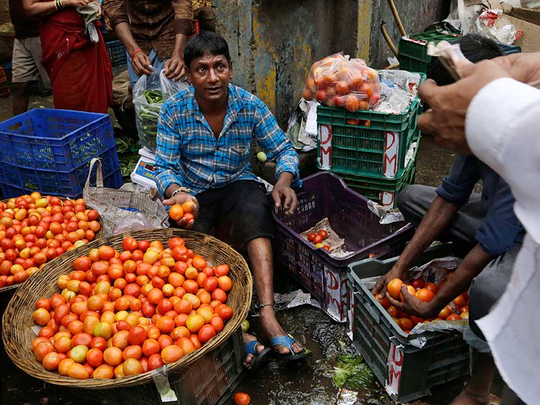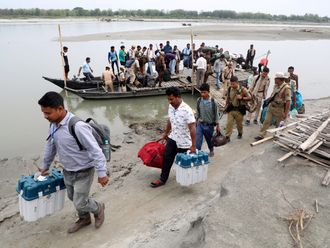
New Delhi: A sudden rise in tomato prices in India has sent home cooks scrambling, market traders demanding guards for protection and even inspiring a “State Bank of Tomato” where Indians can deposit their precious succulent stash for safekeeping.
Prices of the kitchen staple have risen dramatically since June, after heavy rains and flooding in parts of India — which produces about 18 million tonnes of tomatoes a year — have damaged crops and caused severe shortages in some states.
Tomatoes have been selling at about Rs100 (Dh5.7) per kilogram in recent days, or about four times the typical price, according to data from the country’s Department of Consumer Affairs, well beyond reach of many poor and lower-income families.
In a droll move, the youth wing of the opposition Indian National Congress in Lucknow launched a “State Bank of Tomato” on Thursday, where customers can deposit their tomatoes for safekeeping and take out loans for the pricey veggie, or fruit, if you must.
The bank was intended as a political stunt. But it drew serious crowds as people waited in long lines to deposit their tomatoes, fearful they would be stolen from their homes.
“I’m 103 years old, I never thought have to see this,” one customer of the “bank”, Srikrishna Verma, told ANI news agency.
In the city of Indore, armed guards were stationed around the central market at the request of nervous vegetable traders after a “tomato heist” of more than 30 crates at a farm market in Mumbai, the Hindustan Times reported.
The fate of Indian farmers and their crops is linked heavily to the monsoon season from June to August, when the bulk of the country’s rainfall occurs.
Shifts in weather patterns — too little or too much rain — can often impact commodity prices in India around this time of year. Analysts said that the price of tomatoes would remain high until at least middle of August, when fresh supplies from less rain-hit states are expected to arrive.
“This is a lean season for tomato. The price rise is a temporary phenomenon and it will phase out soon,” Agriculture Secretary Shobhana K. Pattanayak told reporters on June 16.
But analysts are predicting onion prices may rise to untenable levels next, and that’s likely unwelcome news to government officials in a country where high onion prices have often caused political blowback. In 1998’s “Great Onion Disaster”, consumer anger over high prices of the lowly bulb toppled the Delhi government of the time — then led by the Bharatiya Janata Party, now India’s governing party.












